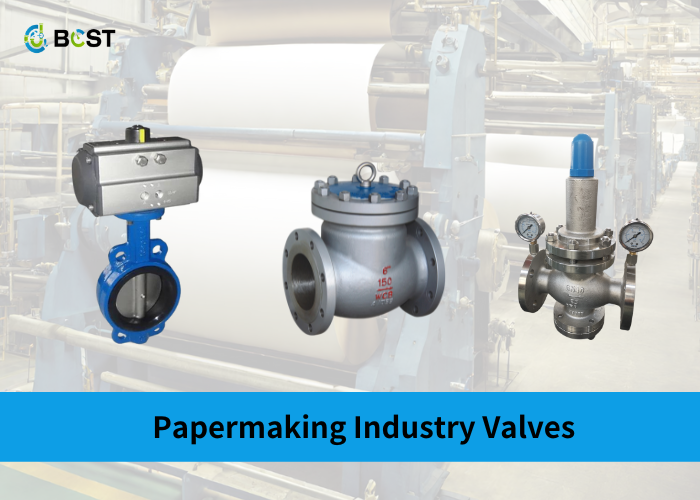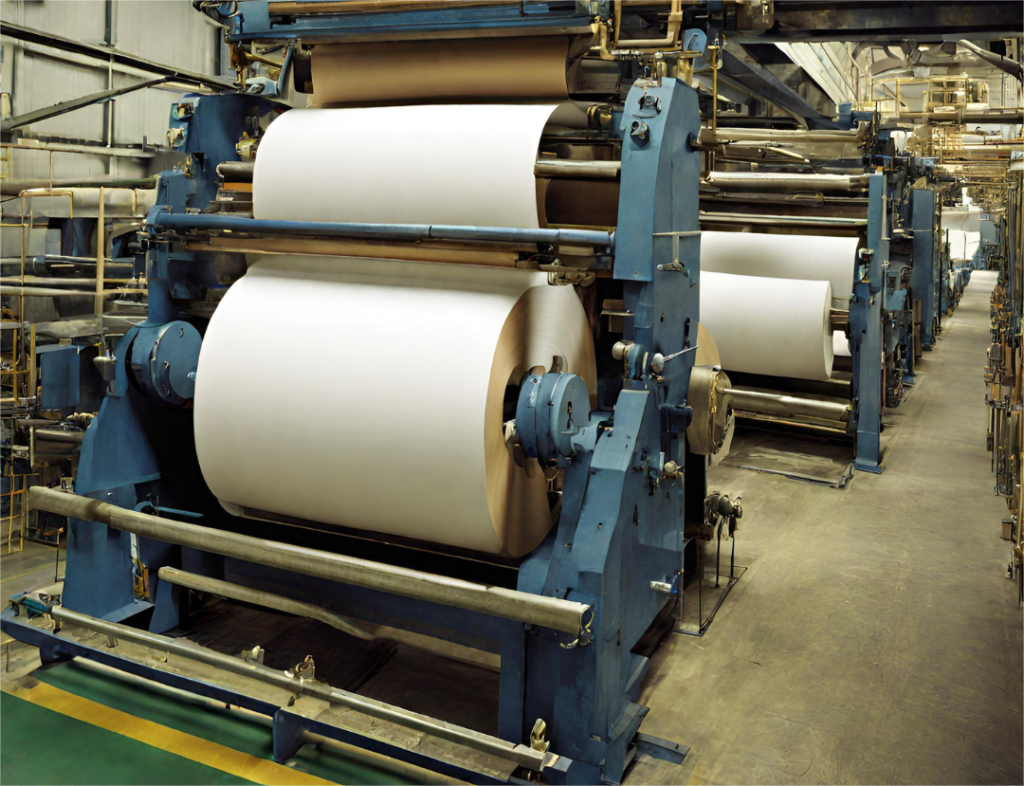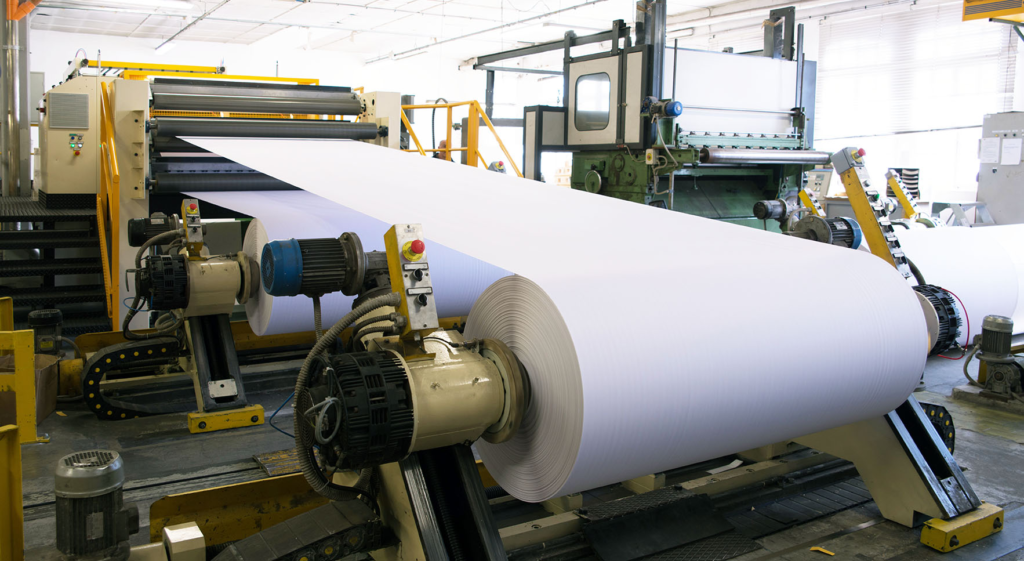
When we think about the papermaking industry, our minds often conjure images of massive machines, towering stacks of paper rolls, and the rhythmic hum of industrial processes. Yet, hidden within this bustling world of pulping, pressing, and drying lies a group of unsung heroes- valves- vital to the entire operation.
Valves, those unassuming mechanical devices, might not steal the spotlight in discussions about paper production, but their role is indispensable. Like an orchestra conductor, valves orchestrate the flow of fluids and gases, ensuring a harmonious and efficient papermaking process. From regulating the flow of water and chemicals to maintaining pressure and preventing backflow, valves are the silent enablers of precision and control in this complex industry.
In this blog, we’ll embark on a journey to explore the pivotal role that valves play in the papermaking industry. We’ll delve into the various types of valves used, their specific applications, and the critical functions they perform at every stage of the paper manufacturing process. So, let’s lift the curtain and shine a spotlight on these unsung heroes as we unravel the intricate dance of valves in paper production.
Understanding the Critical Role of Valves in the Papermaking Industry
The papermaking process involves several key steps, and valves are critical in ensuring the precise control and efficiency of various fluids and gases at each stage. Here’s a brief overview of the papermaking process and the importance of valves:
§ Pulping: In this initial step, wood is broken down into fibers through mechanical or chemical pulping. Valves control the flow of water, chemicals, and steam during this process. Gate, ball, and control valves are commonly used to regulate these fluids.
§ Bleaching: Pulped fibers are often bleached to remove color and improve whiteness. Control valves and pressure relief valves are essential here to manage the flow of bleaching chemicals and ensure safety.
§ Paper Formation: The pulp is mixed with water to create a slurry. Then, it is spread evenly on a wire mesh to form a sheet of paper. Valves are employed to control the flow of pulp slurry and water, maintaining the desired consistency and thickness of the paper sheet.
§ Pressing and Drying: Excess water must be removed from the paper after formation. Valves control the pressure and temperature of the drying process, optimizing the efficiency and quality of paper drying.
§ Finishing: Depending on the paper produced, additional processes like coating or calendering may be required. Valves regulate the flow of coatings, adhesives, and other materials used in these processes.
Throughout these stages, valves ensure precise control over temperature, pressure, and the flow of various fluids, allowing paper mills to produce high-quality paper efficiently and safely. Proper valve selection and maintenance are crucial to the success of the papermaking process, as any malfunction can lead to product defects, operational disruptions, or safety hazards. Thus, valves are the unsung heroes that help paper mills achieve consistency and excellence in their products.

Kinds of Valves used in the Papermaking Industry
In the papermaking industry, various valves control the flow of fluids, including water, chemicals, and pulp. These valves are crucial in maintaining the efficiency and safety of papermaking processes. Common types of valves used in the papermaking industry include:
§ Gate Valves: Gate valves are often used in paper mills. They are used to control the flow of water and chemicals. They provide a tight seal when fully closed and can handle high-pressure applications.
§ Ball Valves. Ball valves are versatile and commonly used for quick shut-off capabilities in papermaking. They are used for many fluids. Ball valves are easy to operate.
§ Butterfly Valves: Butterfly valves regulate water flow and other fluids in paper mills. They are known for their compact design and quick on/off operation.
§ Diaphragm Valves: Diaphragm valves control the flow of corrosive chemicals and abrasive slurries in the papermaking process. They are suitable for handling aggressive fluids.
§ Control Valves: Control valves are essential for regulating the flow rate and pressure of various fluids in the papermaking industry. They are often used in conjunction with automation systems for precise control.
§ Check Valves: Check valves, such as swing check valves or dual-plate check valves, are employed to prevent backflow and ensure one-way flow of fluids in pipelines, which can be important in preventing contamination and maintaining process integrity.
§ Pressure Relief Valves: Pressure relief valves protect equipment and pipelines from overpressure situations, which can occur in various stages of the papermaking process.
§ Knife Gate Valves: Knife gate valves are ideal for handling slurries and fibrous materials in the pulp and paper industry. They provide a tight shut-off and are designed to minimize clogging.
§ Pinch Valves: Pinch valves are used in applications where abrasive or corrosive fluids must be controlled. They work by pinching a flexible tube to stop or regulate the flow.
§ Safety Valves: Safety valves prevent excessive pressure buildup in paper mill boilers and other pressure vessels, ensuring safety during steam and heat generation.
The choice of valve type in the papermaking industry depends on the specific application, the type of fluids being handled, and the desired level of control and reliability. Proper valve selection is essential to ensure the paper production processes’ efficiency, safety, and quality.







